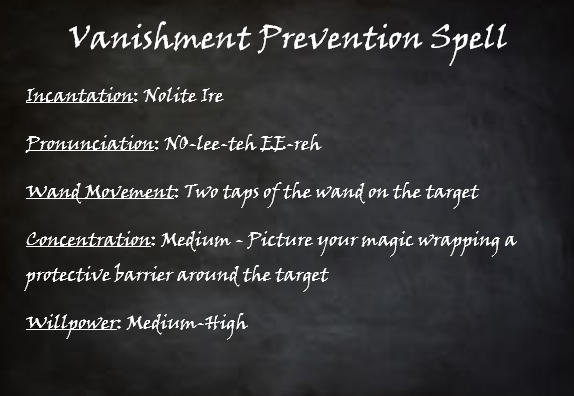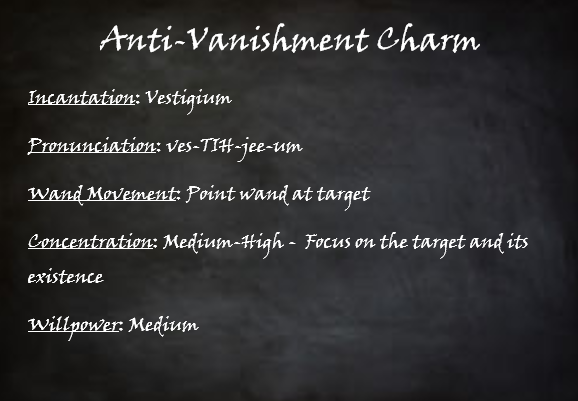Announcements
Welcome to Transfiguration!
11/25/22 - PA Applications will open January 1. Applicants should have completed all Year One assignments, including essays, and have at least an 85% in the course.
Please read the following before beginning this course or reaching out to Professor Mitchell or her PAs with questions.
1. If you have any questions about the course content, please reach out to any of the Transfiguration 501 Professor's Assistants. A list of current PAs can be found on the right side of this page. Please note that owls asking for the specific answers to quiz or essay questions will not be tolerated.
2. If you have submitted an assignment and are waiting for your grade to be returned, please do not reach out to the professor or PAs asking when it will be graded. Our grading team is composed entirely of volunteers and grading can occasionally take a little while due to both the number of assignments submitted and the real life commitments of our team. Please be patient.
3. If you believe your assignment has been graded in error, please reach out to either Professor Mitchell or Dane Lautner with the Grade ID (found in your Gradebook) for the assignment in question along with an explanation of what you believe is incorrect. Please ensure your message is respectful or your appeal will be denied.
4. If you have any comments or feedback about the course, please send an owl to Professor Mitchell.
Lesson 3) Anti-vanishment
Say it Ain’t so, I Will Not Go
Welcome
Professor Mitchell stood at the front of the room with a singular snail on her desk. “Come form a line up here at the front, I have a challenge for you all today!” she called out as the students entered. “Whoever can successfully vanish this snail will earn themselves ten house points and a chocolate frog.” The room filled with excited murmurs at the prospect of such an easily achievable prize. The excitement was short-lived, however, as student after student tried and failed to vanish the rather stubborn snail.
Once everyone had had their turn and took their seat, Professor Mitchell smiled and asked, “Does anyone have any idea why that might have been so difficult? Considering you all should be more than capable of vanishing a common snail at this point? Perhaps it is because I cast a Vanishment Prevention Spell on it before class?” The professor waved her wand and whispered a few incantations before vanishing the snail. “Now don’t give me all those annoyed and dejected looks, you’ll have another fair chance at the points and chocolate later in the lesson. Let’s talk about this spell first, shall we?”
Introduction
We’re going to be covering three spells today. One is the one you just contended with: the Vanishment Prevention Spell. As its name implies, it is a preventative counter, stopping an item from being vanished. The other two are a pair of sorts, neither having much of an effect without the other. The Anti-Vanishment Charm, when cast on an item, allows that item to be re-conjured if it is vanished. Only the caster of the spell can bring the item back with the Reconjuration Spell. You are going to have the opportunity to practice all three of these spells on various targets, but first I’m going to explain a little more about how they work.
Vanishment Prevention Spell
So, I told you at the beginning of the year that all vanishing spells are immediate and irreversible. They scatter the particles of the target, removing it from existence past the point that magic can pull it back together. What the Vanishment Prevention Spell does is create something of a magical force-field around the target object, just above its surface. This holds the molecules in place, preventing them from scattering and therefore preventing the item from disappearing. Can you think of another situation in which this may be helpful? You all know that conjured objects automatically vanish after a period of time. You will learn more about what determines this time next year, but this spell can actually double that longevity, whatever it may be.
Given all of that, it is clear that the Vanishment Prevention Spell can be a helpful little charm to have in your back pocket; but do beware, it is not permanent. With enough effort, the spell can be broken through the application of multiple General Vanishing Spells. How hard it is to break is dependent upon the willpower used when casting the Vanishment Prevention Spell and the strength of the General Vanishing Spells being used against it. The latter don’t need to be incredibly strong to be successful, but weak spells will need to be applied many, many times to be successful. The way this works with conjured items is slightly different, in that once the object tries to dissipate naturally and fails, it will continue to try to dissipate until successful. This is like casting continuous vanishing spells, eventually wearing down the magic of the Vanishment Prevention Spell. If any of you are familiar with the failure modes of materials, this is similar to fatigue.
We’ll be practicing the spell on snails today and the spell details are up on the board as always. When you think that you have cast the spell successfully, call me over and I will attempt to vanish your snail. If I cannot vanish it, you will earn yourself five house points and a chocolate frog!

Though we are teaching it in Transfiguration, this spell is actually a charm, as the field holding in the atoms doesn’t change the molecules of the object itself! It is still static in nature, however, as you can’t re-strengthen it after casting. It is often used as part of the Security Form to protect important and valuable magical objects. Objects like pensieves, orreries, and broomsticks have them as a staple. In fact, a similar charm has been used for centuries as a form of protection and curse-breakers encounter it frequently in their work.
Anti-Vanishment Charm and Reconjuration Spell
The Anti-Vanishment Charm, though similarly named, has a slightly different purpose as compared to the Vanishment Prevention Spell. Rather than creating a force-field around the target, this spell “tags” the atoms of the object such that the caster can conjure the exact item back into existence. It does this by connecting a magical aura of sorts to the individual particles so that when the object is vanished, the particles stay in the area and don’t drift away immediately. It does have its limitations, however. The item must be conjured back within a certain amount of time, determined by the willpower put into the spell, but usually around a couple hours, and it can only be re-conjured in the area from which it was vanished. Additionally, it does not work on living creatures, as it is unable to tag and retain the life force, and the particles of large objects typically scatter too quickly for the spell to be of any use.
So, unfortunately you cannot use just any conjuration spell to bring objects affected by this spell back into existence. You must use a specific spell known as the Reconjuration Spell. This spell is able to detect the aura of the particles marked by the Anti-Vanishment Charm and puts them back together exactly as they were prior to vanishing. The resulting object is identical to the original, and doesn’t disappear like a typical conjuration.
For practice, I’d like you all to pair up and pick up a couple of the objects from my desk to practice on. You should go back and forth, one of you casting the Anti-Vanishment Charm, the other the General Vanishing Spell, and then the original casting the Reconjuration Spell. I’d like you each to try every spell at least three times.


In terms of use, both of these spells can be found in various prank items that always reappear when you try to vanish them. If you’ve ever had the unfortunate experience of trying to blow out those prank candles Muggles make, you’d know the feeling of being the target of one of these joke items. The spells are woven in such a way that the Reconjuration Spell is triggered when the object is vanished. They can also be used if you wish to hide something for a short period of time, as the targets cannot be heard nor felt like they can when invisible. In fact, many organizations, such as the Order of the Phoenix and the Agency for the Protection of Wizarding Secrecy, utilizes this spell pair to quickly hide important documents and artifacts if they believed they were about to be searched.
Historical Context
Those of you from magical households should know the story I’m going to talk about next. From The Tales of Beedle the Bard, the story of “The Wizard and the Hopping Pot” is actually one of the first written records of any type of anti-vanishment, though the magic has been around for a while. In the story, a wizard is left a cauldron and a slipper by his late father, with a note hoping the slipper will never be needed. The young wizard’s father often used the pot to cure the woes of their Muggle neighbors, but the wizard himself didn’t believe they deserved the benefits of his magic and turned away the sick and hungry who showed up on his doorstep. Soon after, the pot left by his father sprouted the afflictions of all those the wizard had turned away, and a brass foot, on which it began, and never ceased to, hop. The wizard tried everything in his power to get rid of the annoying pot, including vanishment, but none of his spells worked. It is clear from this that the creator of the pot cast upon it a spell like the Vanishment Prevention Spell. Given Beedle the Bard was alive during the time of the witch hunts, it’s not unlikely that this and the Anti-Vanishment Charm were invented and used often during this time to hide any wizarding evidence. It’s amazing what kind of historical information we can collect from children’s stories.
Conclusion
Congratulations to the few of you who earned house points! To the rest of you who did not, don’t be discouraged, these are difficult spells. Just keep practicing and you’ll get the hang of it in no time. I’ll see you all next week!
*Wizard and the Hopping Pot image credit: http://harrypotter.wikia.com/wiki/File:O_Bruxo_e_o_Caldeir%C3%A3o_Saltitante2.png*
- TNFG-401
Enroll
-
Spell Differentiation
Assignment -
Baby Don't Go
Essay
-
Dane Lautner
Head Student
-
Claire Peters
Professor's Assistant
-
Isobel Watford
Professor's Assistant


